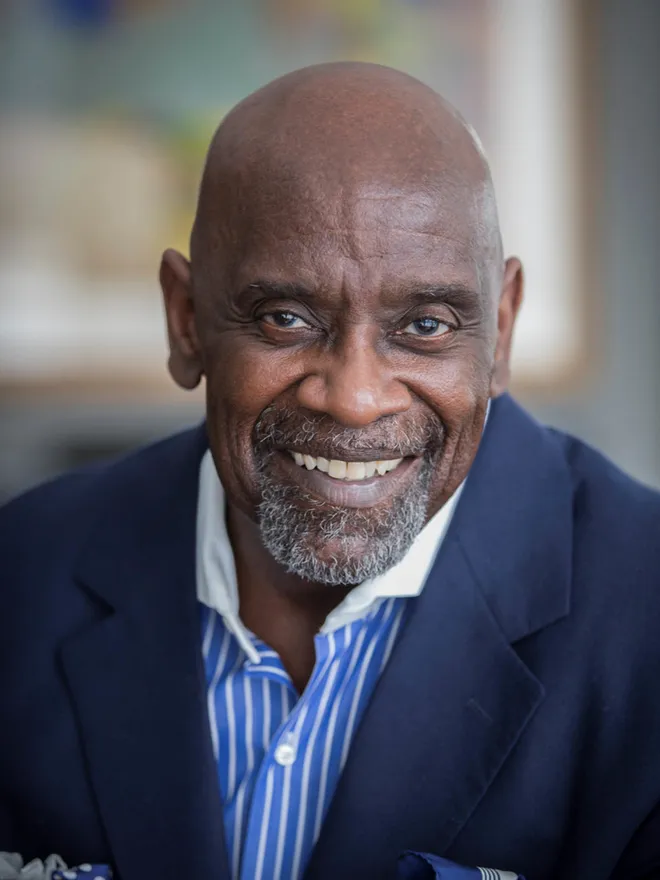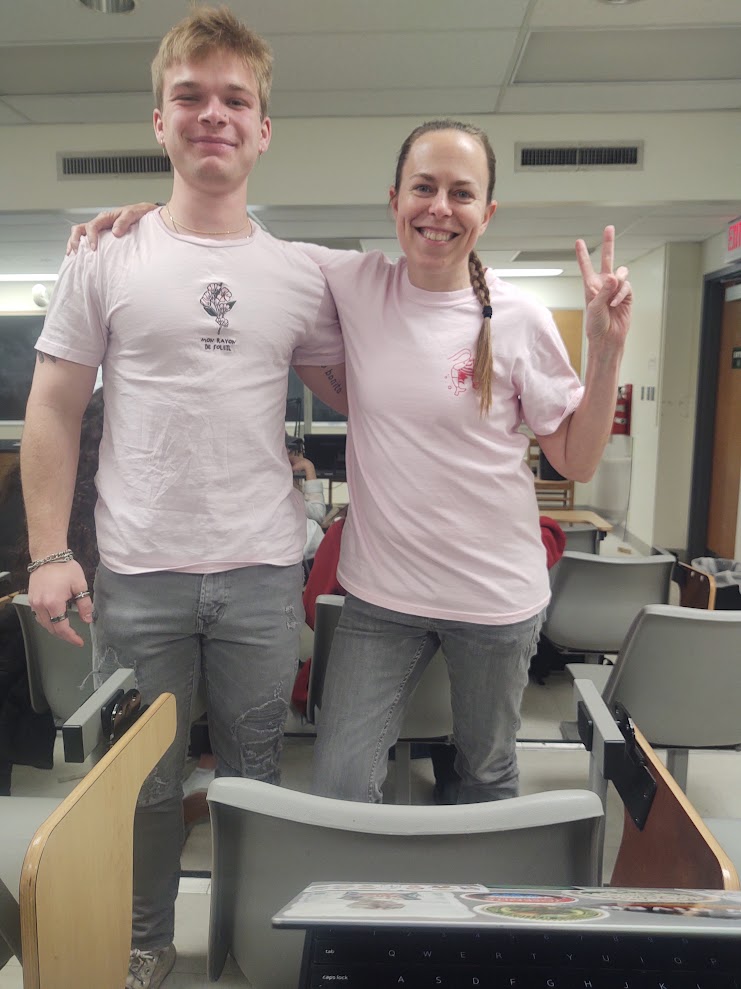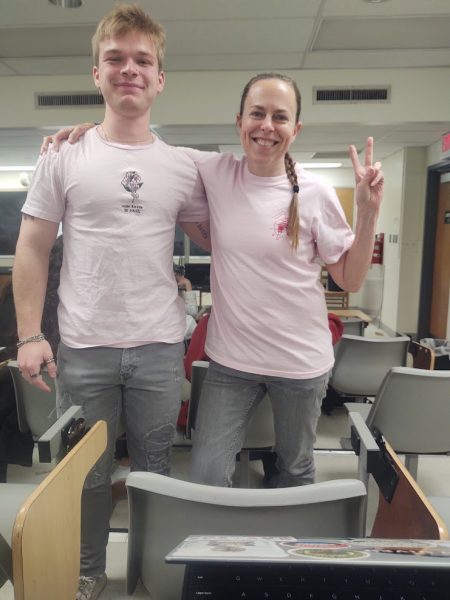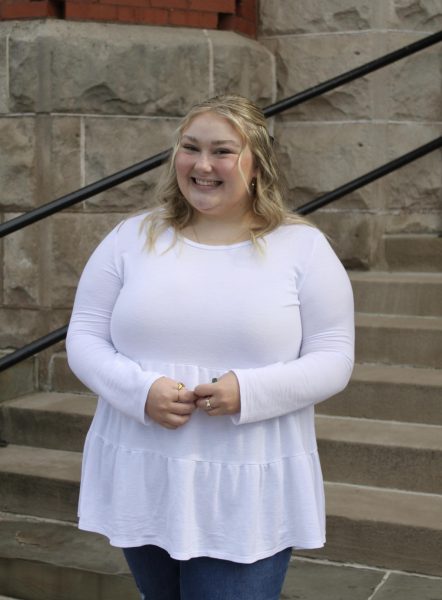Editorial: HEROIN(E) is a hero’s story that is far from over
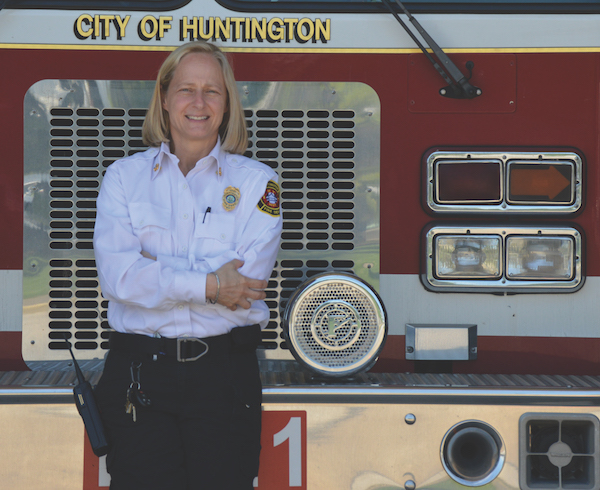
Rader stands in front of a Huntington fire engine.
September 14, 2017
When you think about a classic hero’s story, there are several characteristics that a story must have. First it needs an antagonist or a conflict of some sort. Then it should have a setting that is in need of saving, like a Gotham, so that one day it can be brought back to its prosperous and happy self. And finally, every hero’s story needs a protagonist, or in this case, a “heroine.”
“HEROIN(E)” is a Netflix documentary that follows the story of three women in Huntington, West Virginia who are determined to stop its antagonist and those who fall victim to it. That antagonist being the opiate epidemic that sky rocketed in Huntington, giving Huntington the unappealing title of the “overdose capital of America.”
In “HEROIN(E),” director Elaine Sheldon decides to follow a narrative different from the VICE or BBC documentaries that came before it. Instead, there is this glimpse of hope and possibility throughout a story that is naturally negative.
Being from West Virginia, Sheldon has heard the connotations about Appalachia, and presumably has that chip on her shoulder that so many people from Appalachia and specifically West Virginia have. This allowed her to come at this story with a different approach than just the hopelessness and heroin in Huntington.
Instead, she follows Huntington Fire Chief Jan Rader, Judge Patricia Keller and Necia Freeman of the Brown Bag ministry. These three women are in the midst of their never-ending battle to help people affected by addiction and heroine.
We see three different stages of an addict’s life through the eyes of these women. Jan Rader sees rock bottom. She is constantly on the move throughout the film where she is on the streets actually saving lives. There are several points throughout the film where Rader is injecting Naloxone, the opiate blocker, into someone overdosing. This, for many of the addicts we see, is their “rock bottom.”
Necia Freeman helps facilitate the addict’s decision to seek help, specifically prostitutes. The only place we see Necia is in her car as she drives through Huntington handing out bags of food to people on the street, trying to get them to seek help and shelter.
Finally, the addicts end up with Judge Patricia Keller who is in charge of the addict’s drug court program. With all three of these women, there is so much compassion and mother-like qualities that they give to these people who are struggling. You, as the viewer, begin to feel that same compassion.
This film gives respect to both Huntington and the people who are struggling with addiction. There are several scenes where one of the main characters will be talking to an addict, and you, as the viewer, will never see their face. There is no exploitation of someone at their lowest points. The only time that an addict’s face is shown is when they are in drug court and they’re making the right strides to better themselves.
The film really showcases hope through the story of a recovering addict named Mickey. Mickey is an extreme example of someone who has overdosed multiple times and was in and out of his addiction for ten years. At the end of the film, we see that Mickey is doing well and is taking everyday one step at a time.
But that isn’t the happy ending we get. Just like any great hero’s story, the battle to protect the city they live in is never over. Like Batman looking to the sky and seeing the Bat Symbol, the film ends with Jan Rader hearing her walkie-talkie and saying “I gotta go. Got an overdose.”
HEROIN(E) is an important film for everyone to watch not because of its relevance to Marshall students and people in the area, but because of the narrative it decides to follow. Instead of giving this bleak look into a town stricken by poverty and addiction, it shows the possibilities if everyone is to care and give an ounce of the effort that these three women give everyday.



